Lilac hyacinth: features, varieties and cultivation
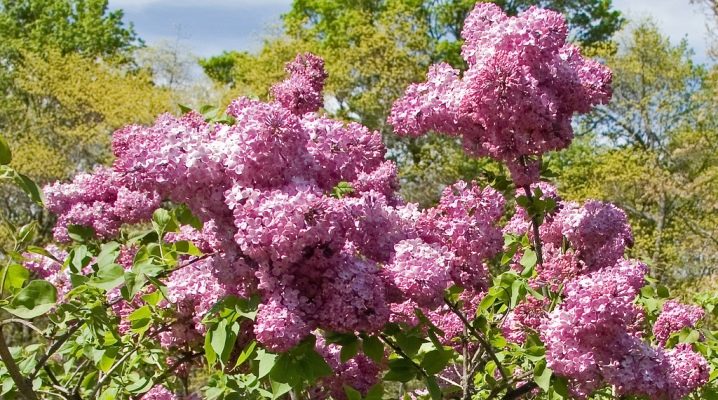
Many gardeners prefer hyacinth lilacs due to its attractive appearance and early flowering period. This plant is always a decoration of the local area. It is worth considering in more detail the features, varieties and cultivation of hyacinth lilacs.
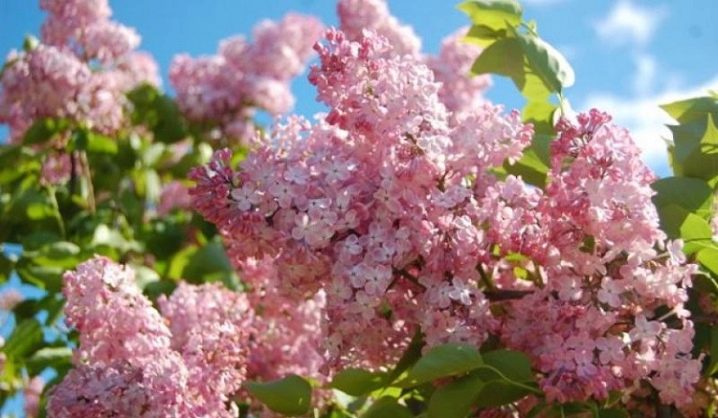
Description
Hyacinth lilac is a hybrid that was bred back in 1899 thanks to the efforts of the famous French gardener Victor Lemoine. To obtain it, he used common and broad-leaved lilacs. Unfortunately, in our country, this variety is not in high demand. And it is a pity, since the flowers of the plant attract attention to themselves with delicate flowering and amazing autumn color of the leaves. This plant is excellent for planting along the house paths, since the bushes reach a height of three meters, while they are characterized by the presence of wide-spread branches at the top. They look lush and curly.
Lilac hyacinth got such an unusual name due to the fact that its flowers are similar to hyacinths. If we compare it with ordinary lilac, then it is worth noting the longer and narrower petals. Also, hyacinth lilac is distinguished by smaller inflorescences, which are characterized by friability, and in the autumn season, its foliage acquires a beautiful brown-purple color. And the main difference is the timing of flowering, after all, hyacinth lilac pleases the eye 7 days earlier than ordinary lilac.
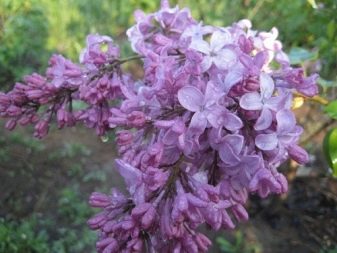
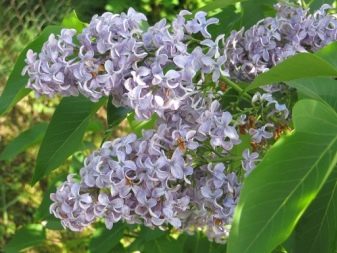
Variety of varieties
Today, many varieties of hyacinth lilac are known. Their main difference lies in the size and color of the flowers, although most are represented by the purple-lilac color scheme. Terry, as well as curly species deserve special attention. Nevertheless, all varieties of this hybrid have an amazing aroma and profuse flowering. All varieties form rather thick and wide bushes.
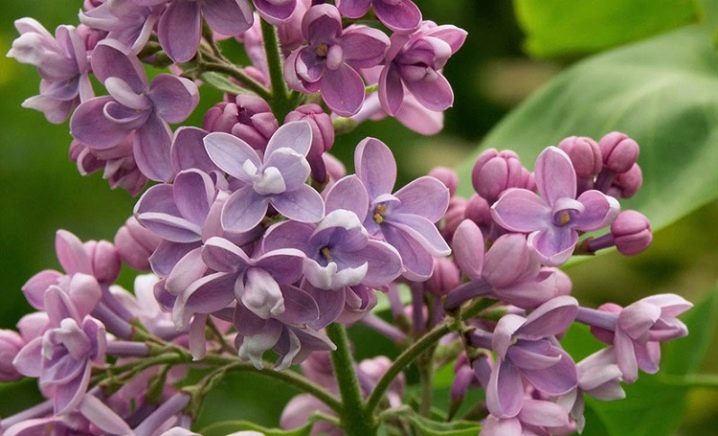
It is worth taking a closer look at the most popular varieties of this delightful plant.
- Buffon. This variety is one of the most demanded. Lilac flowers are presented in large sizes, since they reach 3 centimeters in diameter. Inflorescences are formed in the form of pyramids or spreading panicles. The petals are made in light lilac with a pink tint. This variety blooms earlier than other varieties of lilac, while the flowering period lasts 3 weeks. This ancient variety is often used to decorate alleys. It is quite resistant to various diseases and changes in temperature conditions.
- Sweetheart. The founder of this variety is Arthur Clarke. Translated from English, this type is called "darling". This variety is original and effective. It has crimson buds, double flowers of a light pink shade below have a pink-crimson color. This variety is densely branched, rather tall and straight.

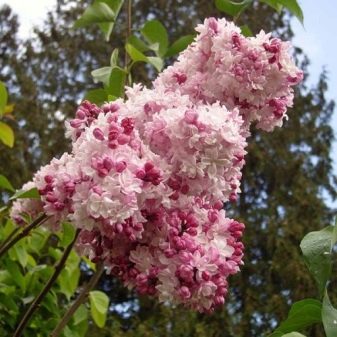
- "Russian hyacinth"... It is a stunning variety that attracts attention with its amazing, oversized buds. Large purple-pink flowers are located on long tubes. The narrow petals have raised edges that fold back when flowering. The bush has a fairly compact size and medium height.
- Esther Staley... The bush is three meters high and has excellent winter hardiness. Flowering occurs in May, the inflorescences reach a length of 16 cm.The reddish-purple buds are quite large. The flowers are presented in a red-lilac shade and have an amazing aroma.
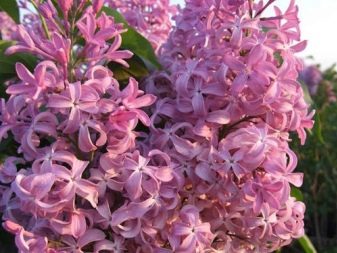

- "Fantasy". This variety was bred in 1950. Dark crimson buds are large. Symmetrical double flowers are presented in a mauve shade. Their distinctive feature is the pointed petals of the flowers. Neat bushes are durable and resistant. This variety blooms quite early and is often used to create amazing bouquets.
- Maydens Blush. This variety was bred by breeders in 1966. It is characterized by early flowering times, therefore it is quite common. The bushes reach a height of 2.5 m and a width of 2 m. Pink inflorescences add charm and tenderness to the lilac.
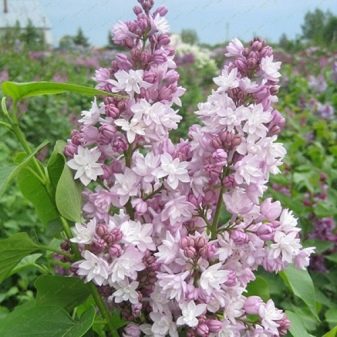
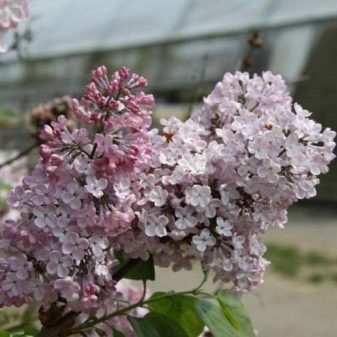
Planting and leaving
This hybrid belongs to unpretentious plants. When choosing a good landing site, you should pay attention to the lighting. For hyacinth lilac, it is important that it is well lit, but at the same time it does not tolerate light in excess. Therefore, it is worth giving preference to places protected from the wind, where it is usually always sunny in the first half. Bushes can be planted from the southwest, they prefer slopes. But being in the shade, the plant begins to weaken, flowering decreases, growth slows down. When choosing soil for planting, it is better to select loose places, while with a slightly alkaline or neutral reaction.
If you plant hyacinth lilacs in central Russia, then the ideal time is the end of August or the beginning of September. Initially, you need to prepare holes for planting. They are created with sheer walls, and their size depends on the soil in which they are formed. So, on poor soils, their dimensions are 100x100x100 cm, while they should be filled with imported soil, and on fertile areas, the size of the hole can reach 50x50x50 or 60x60x60 cm.
During planting, use organic fertilizers, such as rotted manure or compost, and be sure to add wood ash and bone meal.

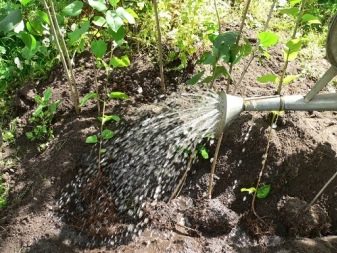
Regular feeding is very important for the proper growth of hyacinth lilacs. But after planting, you can forget about them for a while, because the next feeding will be in about 2-3 years. Top dressing is performed as follows.
- In early spring, nitrogen-containing fertilizers are applied, while preference should be given to organic fertilizing. They are served twice, with a break of 20-25 days.
- With the arrival of winter, the plant also needs organic matter, usually rotted manure, compost or humus are used.
Important! Lilac hyacinth needs fertilizers containing phosphorus and potassium, but they should be applied only once every two or three years, while they are buried in the soil to a depth of about 8 cm.

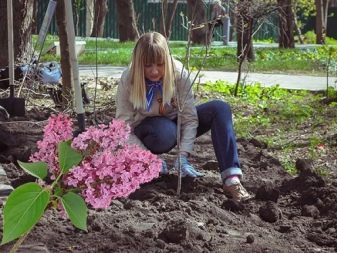
Pruning features
This type of lilac definitely requires regular pruning. It is worth noting that each pruning option is performed at a certain period.
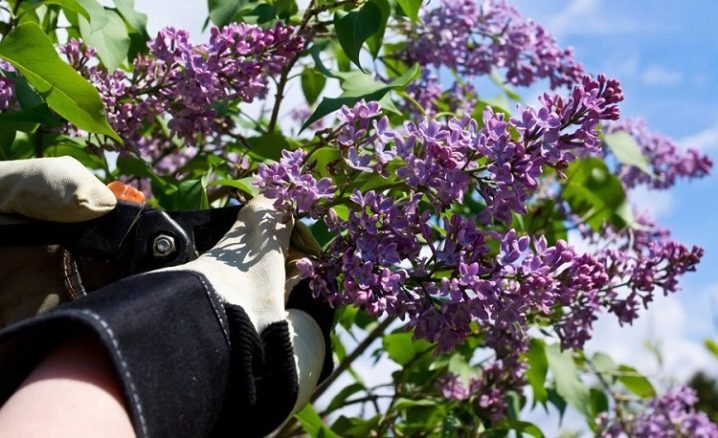
Crown formation
For the first few years, lilacs need to be pruned to form a beautiful crown. Usually, a young plant has a slight increase, therefore, only dried, as well as weak branches are cut off. Strong shoots appear only for 3 years. In early spring of the third year of life, plants should leave 8-10 strongest branches for crown formation. Moreover, they should be at the maximum distance from each other and have an orientation in different directions.
After that, they should be shortened by 2/3, and also all weak branches should be completely cut.
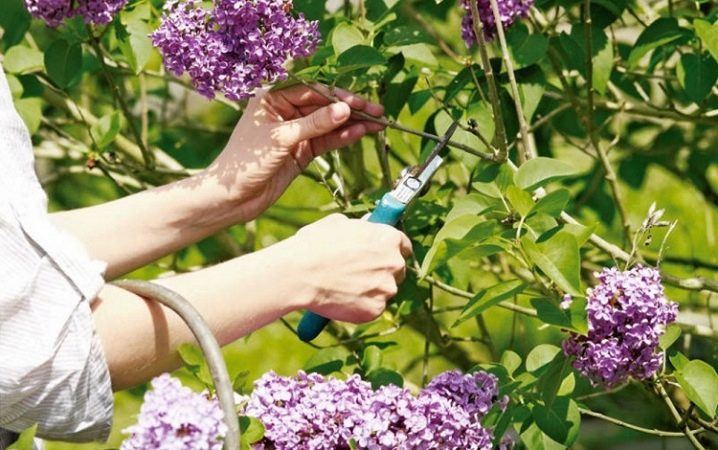
Flowering adjustment
With a strong flowering, the plant spends quite a lot of energy, so next year you should not expect luxurious bushes, flowering will be scarce. To prevent this, it is worth cutting off some of the peduncle shoots every spring, but before the beginning of the growing season.If you want to decorate the house with lilac twigs, then you should not forget that it is best to do this in the early morning, while the escape should be long. It is recommended to cut off no more than 1/3 of the flowering shoots from one bush.
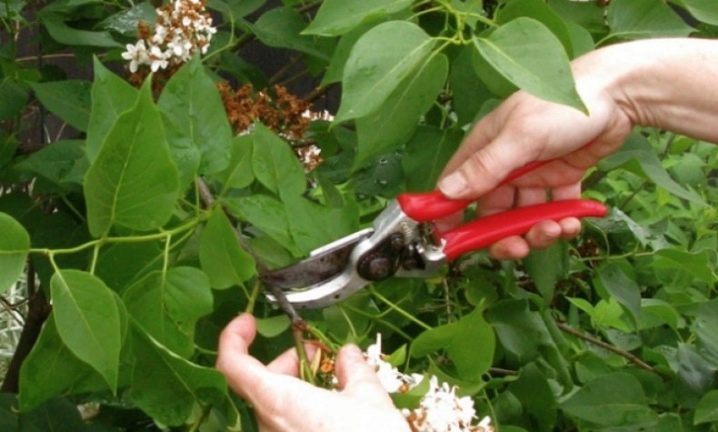
Elimination of faded inflorescences
This pruning is very necessary for the correct establishment of buds and shoots for the next year. It is necessary to cut off the inflorescences with the help of a sharp pruner as soon as they fade. Only 1-2 inflorescences should remain on the bush, this will be enough for them to ripen and scatter the seeds.
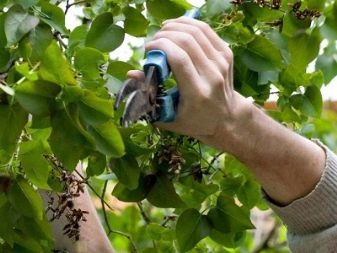
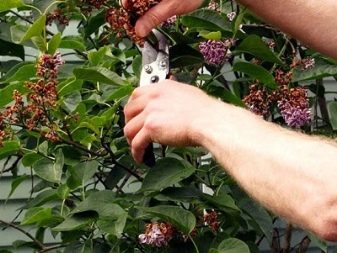
You can learn how to propagate lilacs by cuttings from the video below.



































































The comment was sent successfully.